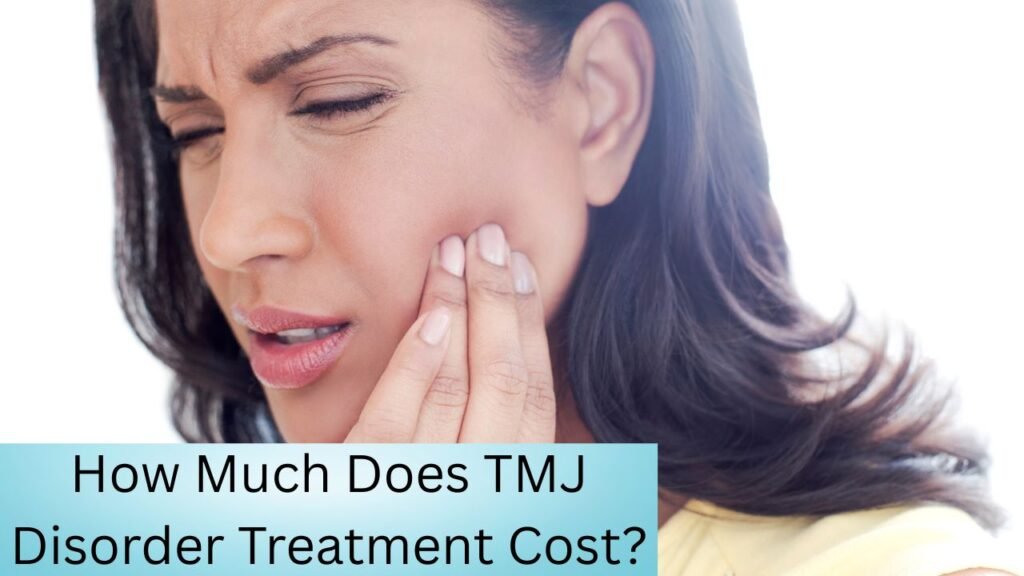Still Wondering What TMJ Treatment Actually Costs? Let’s Break It Down
If you’ve been waking up with jaw pain, hearing clicking sounds while chewing, or even struggling to open your mouth fully—it might be more than just stress. You could be dealing with TMJ Disorder (Temporomandibular Joint Dysfunction). And if you’re here, you’re probably wondering:
How much does TMJ treatment cost in the USA?
Short answer? Anywhere from $100 to over $10,000, depending on how severe your condition is, where you live, what kind of treatment you need—and whether your insurance is actually helpful (more on that below).

At a Glance: What You Can Expect to Pay
Here’s a quick table summarizing the most common treatments and how much they typically cost:
| Treatment Type | Average Cost Range (USD) |
|---|---|
| Initial Consultation + Imaging | $150 – $2,000 |
| Basic Home Care (OTC meds, ice, etc.) | $10 – $100 |
| Oral Splints/Night Guards | $300 – $2,500 |
| Physical Therapy (6–12 sessions) | $450 – $2,400 |
| Botox or Corticosteroid Injections | $400 – $2,000 per session |
| Surgery (Severe TMJ Cases) | $3,000 – $10,000+ |
Key Cost Takeaways You Should Know
Let’s simplify things with a few realistic cost scenarios. These examples will help you understand what people typically spend depending on how bad their TMJ symptoms are:
- Mild Case (tight jaw, stress-related):
OTC pain relievers, soft diet, and maybe a $400 mouth guard.
Estimated Total Cost: $100 – $600 - Moderate Case (daily discomfort, jaw locking):
Custom splint + 6–8 PT sessions. Maybe 1 injection.
Estimated Total Cost: $1,500 – $3,500 - Severe Case (chronic pain, structural issues):
Advanced imaging, surgery, follow-up rehab.
Estimated Total Cost: $7,000 – $15,000+
What Affects the Cost of TMJ Disorder Treatment?
Honestly, it depends on a bunch of things. Let’s break them down:
1. How Severe Your TMJ Disorder Is
This one’s obvious—if your jaw occasionally clicks, your bill won’t be the same as someone who needs joint surgery. Mild cases might just need monitoring or simple treatment, while chronic or degenerative TMJ issues require intensive care and ongoing visits.
2. Which Type of Treatment You Need
Here’s where things really vary:
- Oral Splints / Night Guards
- Basic acrylic splint: $300–$600
- Stabilization splint: $800–$1,200
- Anterior repositioning splint: $1,500–$2,500
These are custom devices made to prevent clenching or grinding. Some need adjustment visits—don’t forget to factor those in.
- Physical Therapy
- 6–12 sessions are common.
- Average: $75–$200 per session.
- Total: $450–$2,400
- Used for jaw strengthening, posture correction, and reducing inflammation.
- Botox or Steroid Injections
- Often used for muscle pain or inflammation.
- Cost per session: $400–$2,000
- May require multiple treatments every few months.
- TMJ Surgery
- Arthrocentesis (joint flushing): $3,000–$5,000
- Arthroscopy (camera-assisted): $5,000–$8,000
- Open joint surgery or replacement: $10,000+
These are rare but necessary in severe structural cases.
- Diagnostics & Imaging
- Consultation: $150–$300
- Panoramic X-rays: $100–$250
- MRI or CT Scan: $500–$2,000
This can be a hidden cost if you’re referred out of network.
Is TMJ Treatment Covered by Insurance? (What You Should Ask)
Here’s the tricky part—TMJ treatment often falls into a grey zone between dental and medical care. Coverage depends a lot on your specific policy.
Ask your insurer these key questions:
- Does my plan cover diagnostic imaging like MRIs for TMJ?
- Are custom oral appliances considered durable medical equipment?
- Do I need pre-authorization for TMJ treatments like Botox or physical therapy?
- Are TMJ services excluded under dental or medical benefits?
Don’t forget:
- Many insurers want documentation from both your doctor and dentist.
- Pre-authorization is often required for splints, surgery, and PT.
- Using out-of-network providers might double your cost, so always check.
How to Make TMJ Treatment More Affordable
If you’re not fully covered by insurance, don’t panic. Many clinics offer ways to make the cost more manageable:
- Payment Plans: Monthly installments, often interest-free for 6–12 months.
- Medical Financing: Providers like CareCredit, LendingClub, and Affirm may be accepted.
- FSA/HSA Funds: TMJ appliances and therapy are usually FSA/HSA eligible.
- Community Dental Clinics: Some dental schools or public clinics offer sliding-scale treatment.
So, Is TMJ Treatment Worth the Cost?
If jaw pain is stopping you from eating, speaking, sleeping, or even just living normally, the real question is—can you afford not to treat it?
Ignoring TMJ issues may lead to:
- Chronic migraines
- Neck and shoulder pain
- Dental wear from grinding
- Limited jaw movement
Early intervention (even something as simple as a splint or physical therapy) can prevent these problems and save you thousands later.
Final Thoughts: Don’t Guess—Get a Diagnosis
TMJ disorder affects millions, but no two cases are alike. Some people get relief in a week, others need months of care. The best way to know what you’ll spend?
✅ Get evaluated by a TMJ specialist (dentist, oral surgeon, or physio)
✅ Ask upfront about fees and insurance compatibility
✅ Start with conservative treatment when possible
Find Your Perfect Dentist
Easily book appointments with top-rated dentists in your area
Need Emergency Dental Care?
Get immediate help from verified dental professionals